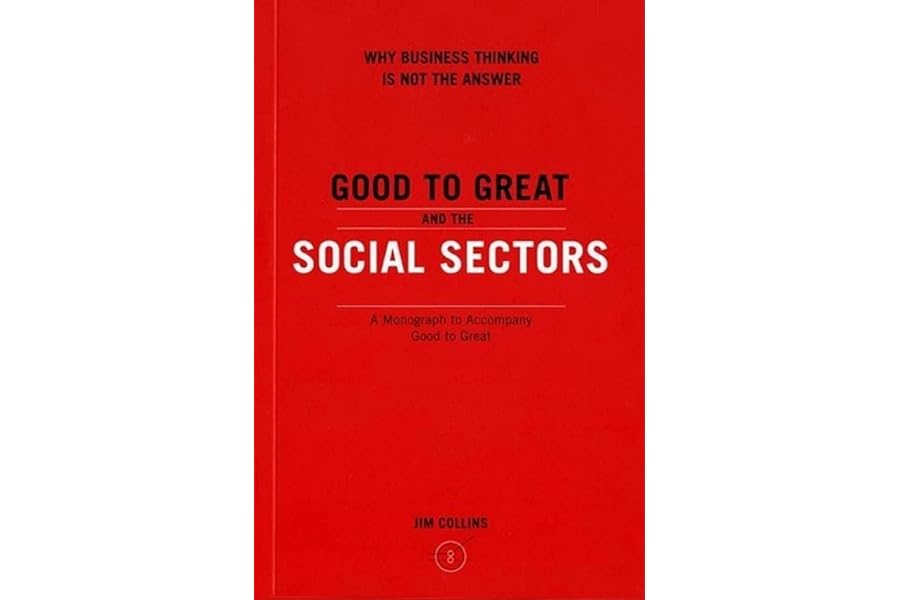One Sentence Summary:
This book challenges the conventional thinking of applying business strategies to social sectors and emphasizes the importance of specific strategies and leadership qualities for organizations in the social sector to achieve lasting greatness.
Book Genre:
Non-fiction, business management, leadership
Main Topic of the Book:
The book explores the differences between businesses and organizations in the social sector, and why traditional business strategies may not be effective for social sector organizations.
Key Ideas:
- Business strategies may not be directly applicable to social sector organizations and require specific adaptations.
- Turning an organization from good to great requires individual and collective transformation.
- Greatness is not just about financial performance, but also about achieving a greater purpose and making a lasting impact.
- The concept of “hedgehog” thinking, which involves focusing on the intersection of passion, talent, and economic drivers.
- The importance of a level 5 leadership, which is characterized by humility, determination, and foresight.
- The role of disciplined people, disciplined thought, and disciplined action in building a great organization.
- The Flywheel Effect, where small consistent efforts can lead to big changes over time.
Main Parts of the Book and a Short Summary:
- Introduction
- Chapter 1: Good to Great and Social Sectors- Why Business Thinking is Not the Answer
- Chapter 2: Level 5 Leadership
- Chapter 3: First Who, Then What
- Chapter 4: Confront the Brutal Facts (But Never Lose Faith)
- Chapter 5: The Hedgehog Concept (Simplicity Within the Three Circles)
- Chapter 6: A Culture of Discipline
- Chapter 7: Technology Accelerators
- Chapter 8: The Flywheel and the Doom Loop
- Chapter 9: From Good to Great to Built to Last
- Afterword: Frequently Asked Questions
- Appendix: Jim Collins’s Response to Questions
Collins introduces the concept of applying business strategies to social sector organizations and how it differs from traditional businesses.
The characteristics of a Level 5 leader and why it is important for creating sustained greatness in social sector organizations.
The importance of having the right people in the organization and how to make hiring decisions based on character and core values rather than skills.
How facing and accepting the harsh realities of an organization can lead to greater success in the long run.
The concept of focusing on the intersection of passion, talent, and economic drivers to create a sustainable strategy for the organization.
The importance of discipline in daily actions, thought processes, and decision-making for creating a great organization.
How technology can be used as an accelerator for the organization’s goals, rather than the sole solution.
The potential of small and consistent efforts to create a “flywheel effect” which can lead to sustained greatness, and how to avoid the “doom loop” of overreliance on technology or drastic changes.
Why building a great organization is not enough, and the importance of having a greater purpose and sustainability for lasting impact.
Key Takeaways:
- Business strategies may not be applicable to social sector organizations and require specific adaptations.
- Individual and collective transformation is necessary to turn an organization from good to great.
- Greatness is not just about financial performance; it is also about achieving a greater purpose and making a lasting impact.
- The “hedgehog” concept, level 5 leadership, disciplined actions, and the flywheel effect are crucial for building a great organization.
Author’s Background and Qualifications:
Jim Collins is a business consultant, researcher, and lecturer. He has authored six books, including Good to Great and Built to Last, which have sold millions of copies in over 30 languages. Collins has worked with CEOs and executives of various organizations, including non-profits and government agencies. He also holds a degree in mathematical sciences from Stanford University and an MBA from Stanford Graduate School of Business.
Target Audience:
Leaders and managers of organizations in the social sector, such as non-profits, government agencies, and educational institutions.
Publisher and First Publication Date:
HarperBusiness, 2005.

